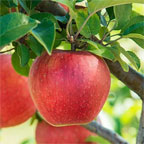- Q.What Suitable Type Of Grass For My Yard - Is St. Augustine a suitable deep shade grass for growing under the weather of Atlanta, GA? And would you please ...
- Q.What’s Eating My St. Aug. Grass - Over the last several years my lawn has disappeared of St. Augustine grass. I do have new growth and it ...
- Q.How To Kill Monkey Grass - Monkey grass has spread to my yard. How can I kill it without killing my St. Augustine grass?
- Q.Grass Under Trees - I laid St. Augustine sod under two trees - one is a Post Oak, the other a Water Elm. This ...
- Q.Killing Dollarweed Before Installing Sod - I wish to install a new St. Augustine lawn. The ground is infested with Dollarweed. Is sugar more effective than ...
- Q.I See Little Piles Of Dirt In The A.m. In My St. Augustine Grass - Are these little piles of dirt worms, night crawlers, slugs, or ??? I live in the San Diego area. My ...
- Q.Why Is My St Augustine Grass Yellow And Spreading - It started in a couple of areas and now it's spreading in other areas. I've put over and out on ...
Q.What Suitable Type Of Grass For My Yard
Is St. Augustine a suitable deep shade grass for growing under the weather of Atlanta, GA? And would you please recommend me what type of grass is suitable to grow on my yard (in Atlanta, GA) which is half with lots of sunlight while the other half is shady?
- A.
No grass will grow well in deep shade, but St. Augustine will have the best choice for shade and sun in a warm climate.
This article will help with giving grass a better chance in the shade:
https://www.gardeningknowhow.com/lawn-care/lgen/growing-grass-shade.htmWas this answer useful?00
Q.What’s eating my St. Aug. Grass
Over the last several years my lawn has disappeared of St. Augustine grass. I do have new growth and it looks promising but it is thin. All around the grass runners is what looks like small ant beds, maybe 1" high. It's all over the yard and the grass is disappearing. I thought that it may be grub worms but after reading a few articles on-line I don't think it is anymore, due to what was posted and what to look for it. I do have earthworms (large ones) and I do have grub worms that I have dug up looking to see anything. The numbers just don't add up to be grubs. So with what looks like small ant beds, what does this sound like here and how can I treat the problem? I've had enough and this year I'm on the warpath. ---Thanks, CJ
- A.
Ants typically don't damage lawns. The exception would be if they were building so many mounds that it was replacing the lawn, but this does not sounds like your issue.
It sounds like you may have a fungus. Have you tried treating the lawn with a fungicide? This article has more info on a few of the more common fungi that attack lawns:
https://www.gardeningknowhow.com/lawn-care/lgen/grass-fungus.htmWas this answer useful?00 Q.How to Kill Monkey Grass
Monkey grass has spread to my yard. How can I kill it without killing my St. Augustine grass?
- A.
There is no weed killer that will kill monkey grass but not turf grass. You can spot treat the monkey grass with Round-up and a spray shield to kill it that way or hand dig it out, but you will have bare spots in your lawn for a bit that you will need to watch in order to keep other weeds from moving into those areas until they fill in.
Was this answer useful?00 Q.Grass Under Trees
I laid St. Augustine sod under two trees - one is a Post Oak, the other a Water Elm. This area is built up and over the years has received topsoil, sand, and mulch. This area gets afternoon sun and I water about ten minutes every other day. This grass was planted two years ago and there is very little left. We live in Corinth, Texas about 35 miles north of Dallas. Is there another type of grass that would do better, or can I improve the St. Augustine?
- A.
Grass is very difficult to grow under any tree, but there are a few things you can do. First, have the tree's branches thinned out. This will improve the light. Next, have the soil tested and treat it for whatever the test recommends. Third, make sure that the area is getting adequate water. Trees drink a huge amount of water and in order for the grass to grow or remain healthy, you will need supplemental water under the tree.
Was this answer useful?00 Q.Killing Dollarweed Before Installing Sod
I wish to install a new St. Augustine lawn. The ground is infested with Dollarweed. Is sugar more effective than Atrazine and Image? Can I use a combination of these?
- A.
This article should help with getting rid of this weed: https://www.gardeningknowhow.com/plant-problems/weeds/eliminate-dollar-weed.htm
Was this answer useful?00 Q.I see little piles of dirt in the a.m. in my St. Augustine grass
Are these little piles of dirt worms, night crawlers, slugs, or ??? I live in the San Diego area. My dogs seem interested in the tiny piles of dirt. If raked away, they reappear again in the morning. Something is crawling out at night. I never see the varmit. I have St. Augustine grass.
- A.
It could be voles, moles or even snakes, all make dirt mounds that are just a few inches high. If the mounds are smaller than a few inches high, it may be ants or possibly termites. Likely, it is from moles that are looking for food, often digging and burrowing in the lawn. They are nocturnal animals, so it is likely you would not see them. Here is more information on controlling moles: https://www.gardeningknowhow.com/plant-problems/pests/mole-control-home-remedies-for-removing-moles-from-your-yard.htm
If you think ants may be behind the dirt piles, this article should help: https://www.gardeningknowhow.com/plant-problems/pests/insects/get-rid-of-ants.htm
Was this answer useful?00 Q.Why Is My St Augustine Grass Yellow and Spreading
It started in a couple of areas and now it's spreading in other areas. I've put over and out on for grubs and other pests, put weed and feed out in late March.
- A.
If not insect pests, it could be a fungus of some sort. Treating the area with a suitable fungicide for lawns may help. Here are some possibilities as to what types, though there are many and it's difficult to say with any certainty which one. https://www.gardeningknowhow.com/lawn-care/lgen/grass-fungus.htm
https://www.gardeningknowhow.com/lawn-care/lgen/lawn-grass-rust-fungus.htmWas this answer useful?00 - A.
Hopefully, this article will help: https://www.gardeningknowhow.com/lawn-care/specific/st-augustine-grass/st-augustine-grass.htm
Was this answer useful?00



